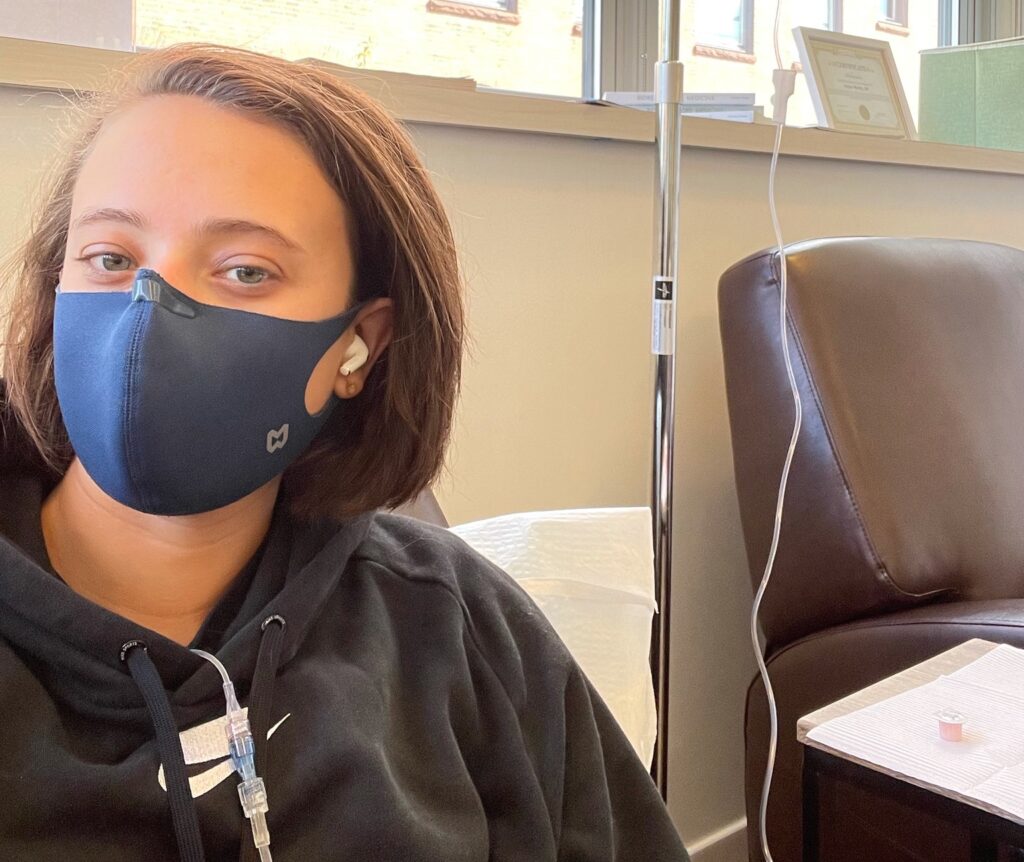In the third installment of our port series, I will break down the most crucial part of having a port: correctly flushing and accessing your implanted port by yourself.
I believe patients should be empowered to learn how to access their ports if they are in a mental and/or physical state to do so. Special steps must be taken to master this skill, but I promise that accessing your implanted port on your own will help you to feel more ownership over your care routine. Nurses trained me at the Association for Vascular Access (AVA) using a training dummy to teach and practice palpating and accessing IVADs (Implanted Vascular Access Devices).
What I learned about port access:
- Before the port is accessed, a numbing cream can be placed on the skin. This helps to numb the skin over the port site. For best practices, put a transparent dressing over the numbing cream and let it sit for one hour before accessing. Some hospitals also have instant skin-numbing spray as an option.
- A sterile technique is used to access the port to minimize the chances of infection.
- The port is accessed with a specialized needle. My favorite port dressing change kit is the “Amanda Stabilizer” from BD. Only “non-coring” port needles should be used to access the port. Once it is accessed, a blood return should be checked. This is done by drawing back on the saline flush. This helps ensure the port is in the vein and the line is not clogged. You should be able to feel if the needle hits the port’s inner wall. Think of it as target practice!
- If your caregiver believes your port should remain accessed, a clear transparent bandage will be placed over the needle site. The dressing and needle will need to be changed weekly or as directed by your caregiver. You can find all of my favorite IV supplies here.
- If the port is left accessed, keep the bandage that covers the needle clean and dry. Please do not get wet, and follow the above instructions on how to shower when the port is accessed.
- Always use a cap at the end of the line. My favorite options are Swab Caps and Curos Caps.

Flushing your port:
To prevent your port from clogging, flushing is critical. Depending on your infusion type, a few factors determine how often the port is flushed:
- If a constant infusion is running the port may not need to be flushed
- If intermittent medicines are given, I would always flush between each medication using a method called S-A-S-H.
- S: Saline
- A: Antibiotic (of whatever your prescribed medication is)
- S: Saline
- H: Heparin (to lock the line and prevent clotting)
- If the port is not being used, it is advised to flush it at least once per week
For Intermittent medicines, you will need to flush the port:
- After each medication has been given
- After blood has been drawn
- As a part of routine maintenance
If you’ve been trained and instructed to flush your own port, follow your caregiver’s advice on how often, how much, and the type of flush to use. It is important to note that there are different units of heparin flushes. Additionally, tell your caregiver if you are allergic to heparin. You should mention if you are religiously opposed to heparin as it is derived from pork products.
What other topics do you want us to cover regarding ports? Leave a comment below or email us directly here.

